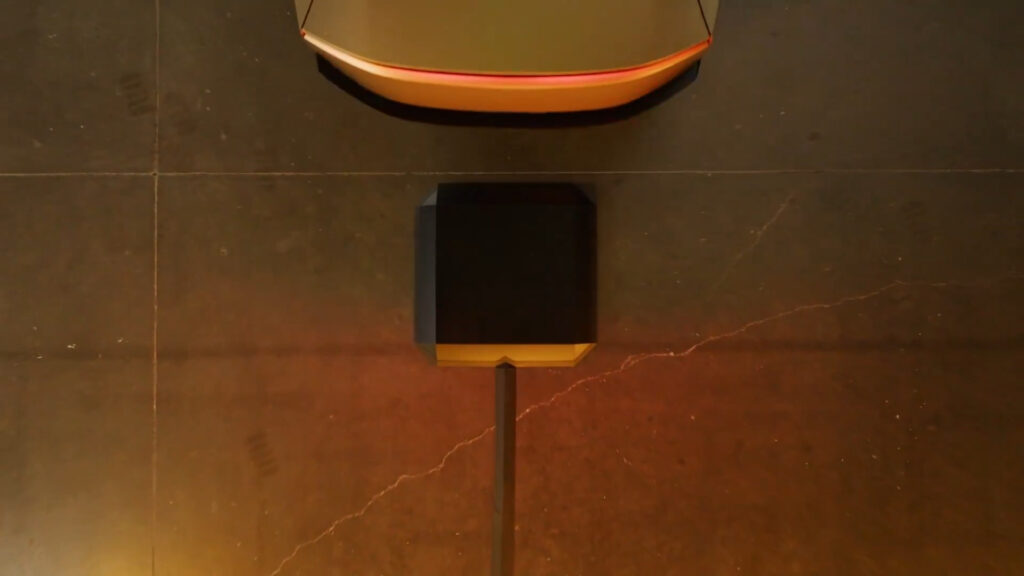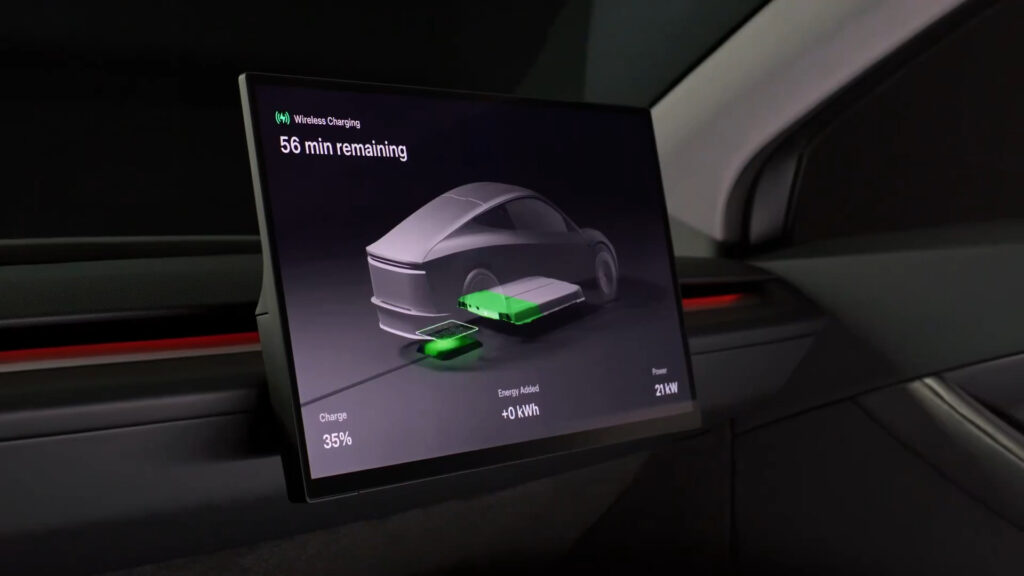In a short video published by Tesla, we can see a Robotaxi at a wireless charging station. A lot of mysteries surround this feature.
With its Superchargers, Tesla has an impressive number of charging stations across the planet. The company plans to start from scratch with its Robotaxi, a 100% autonomous vehicle that recharges by induction.
This idea struggles to convince the brand’s followers, who do not understand why Tesla prefers to rely on wireless, which we know is less effective, to charge its new vehicle. The most obvious answer is that Tesla doesn’t want to hire people (or robots) to plug in driverless vehicles, which forces it to rely on induction, which doesn’t need anyone. But the creation of a second Tesla charging network will necessarily serve drivers.
In a video published on Twitter (or X), we can see for the first time a prototype of a Tesla induction charger. The interface is well thought out, but the problems remain the same.
Are parking lots really going to install wireless Tesla terminals?
There’s still a lot we don’t know about Tesla’s wireless chargers. Are they connected to large terminals? Are they easy to install in a parking lot? The video published by the company in any case reveals their design: a Tesla induction charger takes the form of a black square connected to a wire. It is the rear of the vehicle, under the trunk, which has the charging coils.

According to Tesla, the Robotaxi will be able to find the chargers on their own.
They will perform a reverse maneuver and charging will begin. Tesla has already planned beautiful animations to illustrate the wireless charging of its vehicle, with a charger that sends waves to the battery, under the Robotaxi.


In the video shared by Tesla, we notice that wireless charging goes up to 25 kW, which seems rather correct for induction.
The charging time will necessarily be much longer than wired, but Tesla is based on the fact that a Robotaxi can afford to spend several hours at a terminal. In the demonstration video, a vehicle charged to 35% must wait 56 minutes to leave (and we don’t know how much it goes up). The infrastructure of Tesla induction charging remains unknown, it is better to be careful and be wary of this screenshot.
There remains a major problem: Tesla is gradually turning its back on its own Supercharger network, after having already started to slow down the openings. An individual with his own terminal, if he wishes to add a Robotaxi to his fleet, will necessarily have to acquire a new proprietary charger. The problem is not that the Tesla Robotaxi can charge by induction, but that it does not have a conventional port at all.
Source: www.numerama.com


